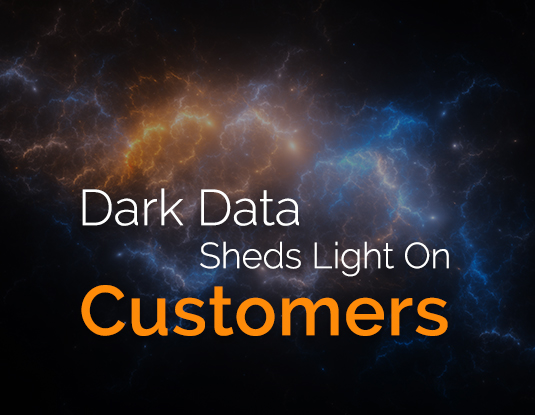deccatalkingpoints@decdesign.com
Dark Data Sheds Light on Customers

Are you using dark data? You should be. Simply put, dark data is your company’s unused data. In other words, it’s all the information you have at your disposal but somehow fail to access. IDC says 90% of this data is never analyzed. Online reputation management (ORM) is fixing that by helping companies make sense of dark data gleaned from social media to uncover trends, identify brand perceptions, and enrich customer experiences. The trick is making the right operational improvements to accomplish all of that.
The Dark Data Dump
Dark data is the untapped, unstructured digital information that is either hidden in plain sight on social media or quietly
lurking in your data center’s shadows. However, there’s nothing scary about it. In fact, if captured, stored, analyzed, and applied properly, dark data can provide operational insights, spot potential pitfalls, increase revenue, and improve the customer experience.
Become A Miner
Structured data is the highly-organized information you get from surveys, form submissions, and so on. Yet only 20% of your organization’s data is structured. The other, unstructured 80% is data that can be mined call center records, marketing automation system notes, and most notably, from social media posts and online reviews.
Turning Organic Data into Gold
Most dark data is generated organically. Social media users tweet about or post their purchasing, dining, and entertainment experiences on social networks. These social shares are teeming with usable feedback and data about your brand. When a millennial takes a selfie at an auto dealership and posts “Finally got that new car I wanted, but I had to haggle four hours!,” she passes along several pieces of information about the car and the dealership to her followers. Responses to the post might include details about car ownership, dealership staff, and other personal experiences. Access to such data can help a company build a “big picture” about customer beliefs, refine marketing efforts, and make operational improvements.
It Pays to Get Sentimental
Social media posts and online reviews can be filtered to spot customer sentiment trends. Some ORM platforms can even compare these trends with what you currently know about customers. Sentiment analysis tools take things a step further. They provide in-depth analysis of customer feedback and compare your performance to that of your competitors. In short, tools such as these help you gain much more candid and insightful information than structured data can possibly provide.
Create A 360-Degree View
Data contained in Twitter streams, social media posts, and online reviews can help companies gauge customer sentiment and preempt potential problems. When companies combine unstructured data with existing transactional data, they create a 360-degree view of their customers’ beliefs and behaviors. As a result, they can make customers happier, strengthen their brands, and generate more business.
Based on Dark Data on Social Media: Insights That Shed Light on Your Business by Mark Lange.
